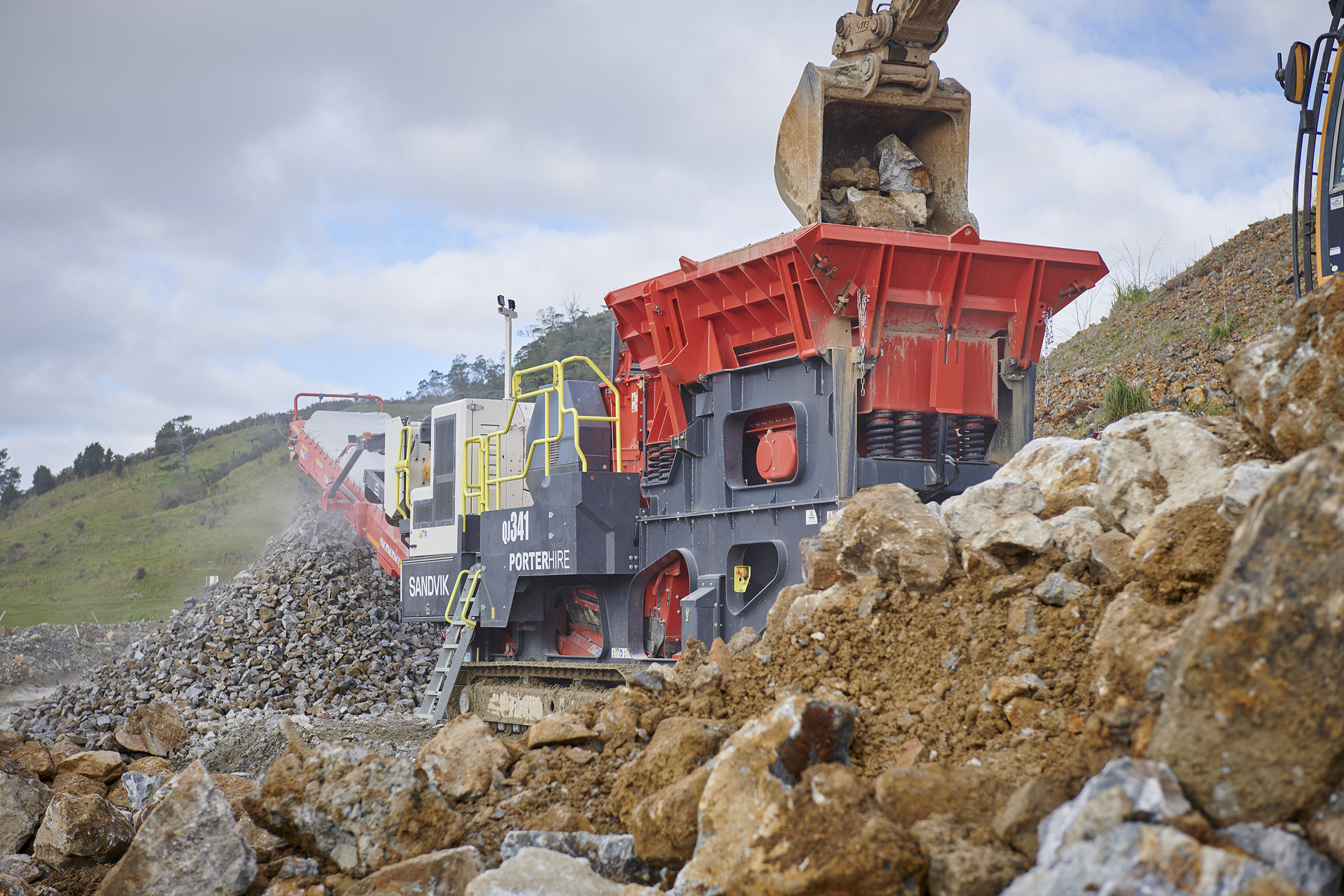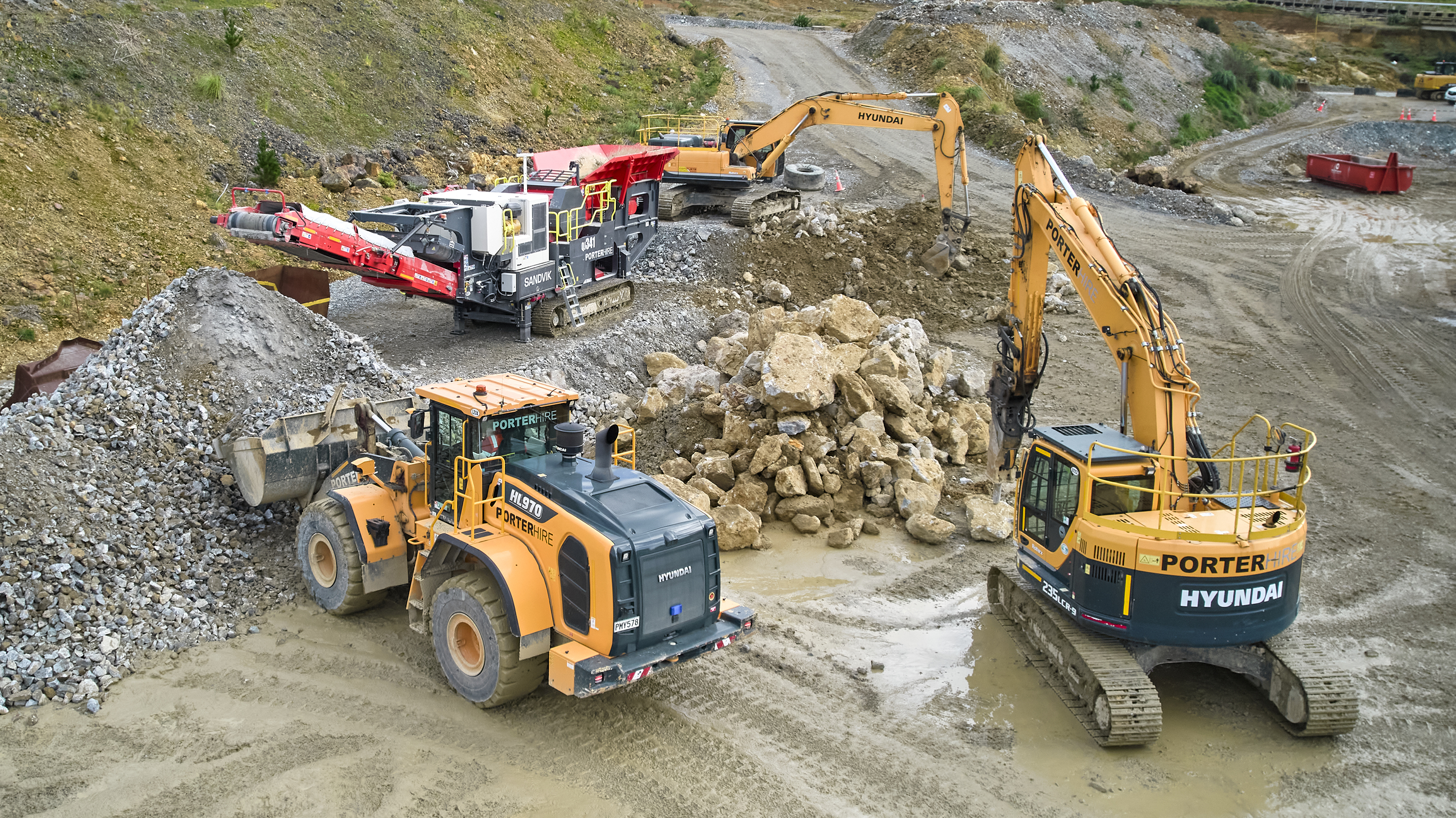Gold class service and machinerySponsored
At OceanaGold in Waihi, the art of extracting gold from rock is a long and intensive process requiring many big machines and skilled workers. Recently, a Sandvik mobile jaw crusher joined the fleet to facilitate the magic.
Gold was first discovered in Waihi in 1878 on Pukewa (Martha Hill), and miners, using explosives, picks, and shovels, loaded quartz rock onto wagons on rails in the tunnels, before it was lifted to the surface and sent to be crushed then treated to extract the gold and silver at the Victoria Battery.
Around 5.6 million ounces of gold and 38.4 million ounces of silver were extracted from the mighty Martha Mine before it closed in 1952, due to the international gold price being fixed at US$35 an ounce, limiting the revenue the mine could make, and the outdated machinery which needed costly replacement.
With the price of gold increasing in the 1970s, mining recommenced at Waihi in 1987 – this time with environmental considerations at the forefront of operations and big machinery doing the hard work.
In 2019, OceanaGold was given consent to develop the Martha Underground Mine, and the workings are set to extend some 300 metres below the current pit floor.
Each month, the team at OceanaGold extracts some 35,000 to 40,000 tonnes of ore to be processed. In the first quarter of 2023, it produced 10,295 ounces of gold.
As part of the process, any large rocks need to be pulverised to 250mm or smaller. This job falls to a Sandvik QJ341, a heavy duty jaw crusher recently hired from Porter Group.

“Our old crusher was getting a bit long in the tooth and was becoming unreliable, so we asked Porters to supply us with a new one,” says Brett Twidle, specialist – processing at the mine.
“The Sandvik QJ341 was the most suitable machine for what we needed, and it’s been performing very well.
“In short, it doesn’t break down.”
Twidle says the crusher operates about three out of every four weeks and in that time will crush about 10,000 tonnes of oversize ore.
It works alongside a number of different Hyundai machines also on hire from Porters. A large excavator feeds the crusher, while a smaller 23 tonne Hyundai excavator is fitted with a rock breaker to shatter the largest of boulders beforehand.
At the other end of the crusher, a Hyundai wheel loader stockpiles the crushed rock as it tumbles off the conveyor belt.
The QJ341 is the largest in the Sandvik Q range of tracked jaw crushers, which prides itself on reliability, productivity, and safety.
Sandvik says its crushers feature a powerful and durable jaw to ensure maximum performance. The large feed opening and high crushing speed enable excellent throughput. In addition, the equipment can start under load, maximising uptime and productivity.
Twidle says they’ve had the machine for just over a month now and he’s very pleased with how it’s going.
“It’s extremely reliable, and our operators really like it.”
When it arrived at the mine, Porters also dispatched its Sandvik specialist to provide a couple of days training to ensure the operators got the most from their new machine.
It’s this level of service that keeps Twidle returning to Porters for his gear.
“They’re very, very good. We’ve got quite a bit of different machinery from Porters, and to be honest, it doesn’t matter so much about the gear, it’s all about the people – it would be hard to move away from Porters because of their high levels of service.”
